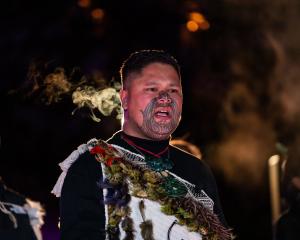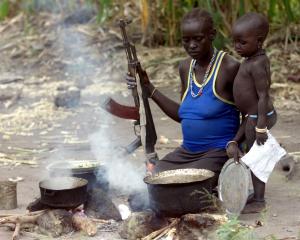
Debates about the repeal of Section 7AA of the Oranga Tamariki Act, focused on Treaty of Waitangi partnerships and disparity reduction in the child-protection system, continue unabated.
Smoke-and-mirrors claims about the effect of the repeal are being used to propel a narrative of child harm, but closer scrutiny of the Act shows other provisions are much more directly relevant to decision-making about individual children.
This suggests other intentions underpin the repeal. Meanwhile, evidence about just what effect s7AA has had has largely gone unnoticed.
The claim is that s7AA is the culprit responsible for examples of poor practice, those where an emphasis on maintaining Māori children’s whakapapa links has overridden the primacy of children’s ‘‘wellbeing and best interests’’ in s4 of the Act.
Quite apart from the fact this argument seems to try to solve a matter of poor interpretation with legal, rather than practice, change, and uses little more than anecdotal information to support the claim, a look at the legislation more broadly finds more fundamental problems with this rationale.
Other sections of the Act promote attention to children’s whakapapa in decision-making much more directly and strongly than s7AA, and were introduced at the same time, yet are not under the repeal hammer. This suggests the real intention behind the repeal is the removal of reference to the Treaty rather than to solve a substantive detrimental effect on decision-making.
S7AA is primarily aimed at giving practical effect to the Treaty of Waitangi by measuring and reducing disparities for Māori, creating partnerships with iwi and Māori organisations, delegating functions of the Act to Māori organisations, and ensuring cultural competency of staff.
It is not especially focused on decision-making for individual children at all, but disparity reduction and Treaty-based rights for iwi. For example, the wording within 7AA only tangentially references decision-making relating to specific children.
This is the most pertinent, and even this is vague: ‘‘The chief executive must ensure that the policies, practices, and services of the department have regard to mana tamaiti (tamariki) and the whakapapa of Māori children and young persons and the whanaungatanga responsibilities of their whānau, hapū, and iwi.’’
Compare this with other sections of the Act that are under no threat of repeal, the s5 principles for example. These state that: ‘‘ ... the wellbeing of a child or young person must be at the centre of decision making that affects that child or young person’’, and, in particular: ‘‘Mana tamaiti (tamariki) and the child’s ... wellbeing should be protected by recognising their whakapapa and the whanaungatanga responsibilities of their family, whānau, hapū, iwi, and family group.’’
Then comes this: ‘‘The child’s or young person’s place within their family, whānau, hapū, iwi, and family group should be recognised, and ... the effect of any decision on the child’s or young person’s relationship with their family, whānau, hapū, iwi, and family group and their links to whakapapa should be considered, (and) ... wherever possible, the relationship between the child or young person and their family, whānau, hapū, iwi, and family group should be maintained and strengthened.’’
These s5 provisions focus much more directly on whakapapa in decision-making about individuals than s7AA, yet it is s7AA that is being targeted as the assumed cause of an over-emphasis on these factors.
Both s5 principles and s7AA were introduced on the same day in 2019, but, again, it is s7AA with its mention of Te Tiriti that is being blamed for an emphasis on whakapapa when other sections are far more directive on this matter.
If one really believed that the anecdotal cases of poor practice were directly caused by bad legislation, then it would be s5 up for scrutiny instead. The use of children’s best interests appears to be a red herring aimed at tugging on the public’s heartstrings, when the real aim is to reduce the power given to iwi through Treaty-based institutional power-sharing and delegation of decision-making by s7AA, and remove the onus on government for reducing disparities.
A related question concerns evidence of the impact of s7AA. Minister for Children Karen Chhour claims ‘‘people have told me’’ that it has been used to make poor decisions. As the Waitangi Tribunal notes, this is limited and anecdotal as evidence of a causal connection. There has been little discussion of what evidence there is that s7AA has, or has not, achieved its stated aim: to reduce disparities for Māori in the child-protection system.
This is a complex question to answer, because it’s difficult to disentangle the effect of any given piece of legislation from the social and organisational contexts it took place in.
S7AA took effect in the midst of a media storm in response to the Hawke's Bay case, protests, an internal Oranga Tamariki review, the Ombudsman’s investigation and a Waitangi Tribunal hearing.
These undoubtedly all affected the resulting policy and practice changes, but determining the relative effect of each is not straightforward. However, what we can surmise by examining trends is that these drivers together have resulted in a marked reduction in disproportionality for Māori, and disparities have also reduced, albeit more slowly.
Ironically, many of the statistics that follow are sourced from the reports produced by Oranga Tamariki as part of their s7AA obligations: to measure and report publically on disparities.
First let’s look at disproportionality: the share of Māori children in contact with the child protection system as a share of all Māori children. Since 2019, there has been a reduction of Māori children in care of 34% (from 4420, to 2904 in 2023).
Since 2018, entries of Māori children to care have reduced by a whopping 57% (from 1533 to 652). All the while, the Māori child population is steadily increasing, currently around 27%. So though the Māori child population increases, entry to care and children in care for Māori are both reducing.
A more specific examination of rates show that disproportionality for all-age Māori children in entries to care reduced from 5.2 children per 1000 in 2017, to 4.0 in 2019, to just 2.0 in 2021. In some age groups, this has been even more pronounced.
The rate of Māori babies entering care within three months of birth, for example, fell from 102 per 10,000 in 2019 to 39 per 10,000 in 2020, a reduction of nearly two-thirds.
Disparities (the difference between Māori and non-Māori) have reduced on some indicators but remain stagnant on others, partly because Māori and non-Māori rates of system contact have dropped.
Of all the children in care in 2023, 67% were Māori, very similar to 2019. But remember, this is 67% of a much smaller overall number.
For babies, not only have those entering care reduced, from 238 in 2019 to just 98 in 2023, the disparity ratio for babies also dropped between 2019 and 2020, from 5.7 times to 3.3 times.
Disparities do remain, but far fewer Māori children are entering care or remaining there, and the differences between Māori and non-Māori children are also showing moderate reductions. These changes are startling. After a long period of either stable or rising disproportionality and disparities, we have seen a sharp decline.
Is it simply coincidence that this downwards trend centres around the year that s7AA took effect on June 1, 2019?
It’s true that some smaller reductions happened in the numbers slightly earlier, likely a result of some of the other practice changes implemented due to earlier reforms.
But the combination of the Hawke’s Bay case with the ensuing protests, inquiries and prevention orientation was certainly bolstered and enabled because of s7AA. This evidence, though partial, shows s7AA is contributing as intended: to reduce disparities for Māori in the child protection system. — Newsroom
■Emily Keddell is an associate professor in the social and community work programme at the University of Otago.










